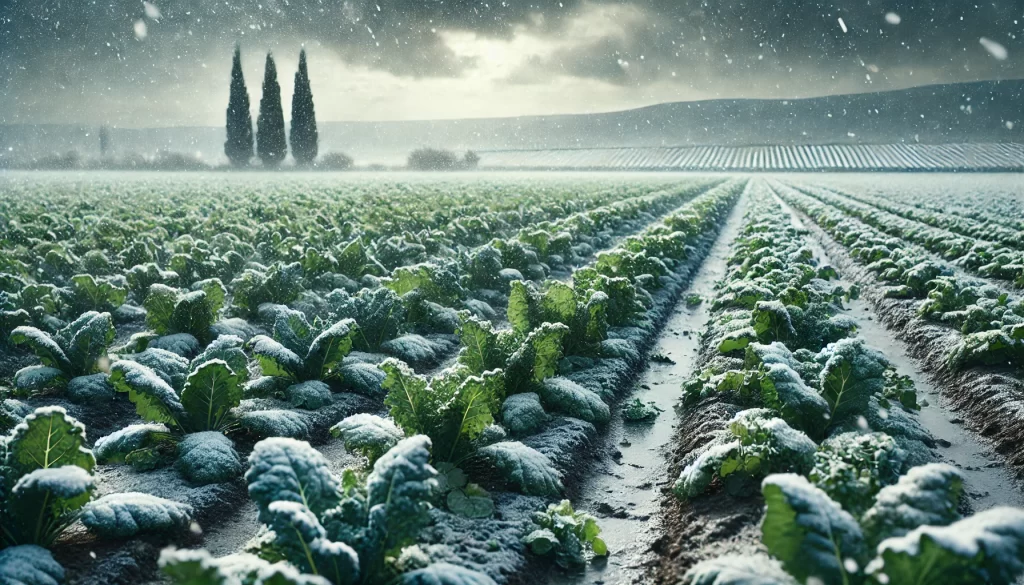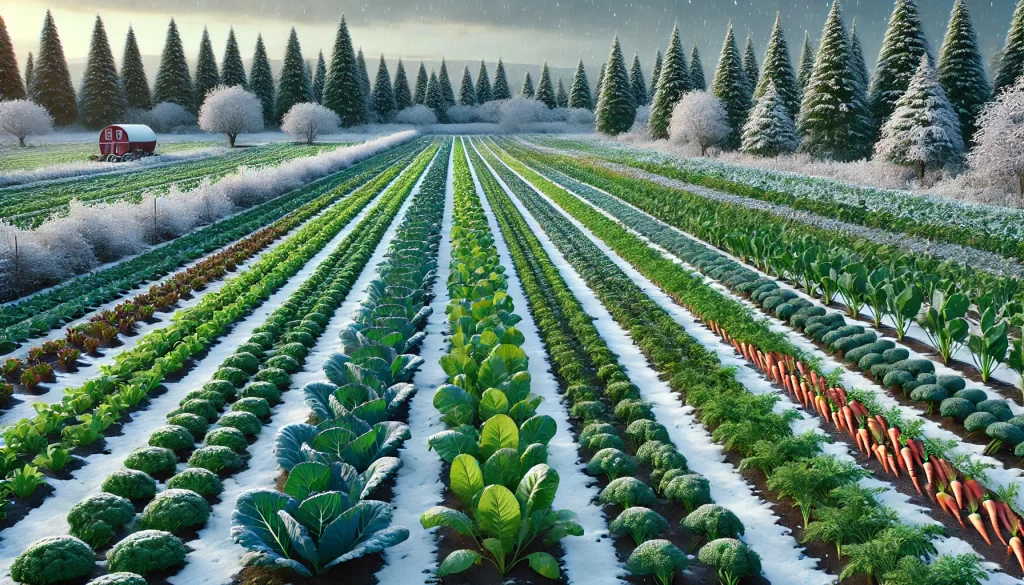The Seasons and Their Role in Agriculture (Part 3: Winter)
Winter is a season characterized by low temperatures, short days, and in many regions, frosts or even snowfalls. These conditions pose a significant challenge for farmers, as the cold can halt the growth of many plants and limit field activity. However, there are crops that adapt well to the winter climate, and with the right practices, it is possible to maintain production. In this third part, we will focus on how winter affects agriculture and the best practices for the season.

Winter: Challenges and Adaptations in Agriculture
Winter presents tough conditions, such as the risk of frosts, which can damage both crops and the soil. Despite this, many farmers take advantage of this time to prepare the land and plan for the next season’s crops. Cold-resistant vegetables are also grown, and protective techniques are used to help mitigate the effects of the weather.
Winter Climatic Features
- Temperature: Low, with the possibility of frost and, in certain areas, snow.
- Precipitation: Depending on the region, there may be moderate rainfall or snow.
- Sunlight: Short days and low solar intensity, limiting photosynthesis.

Recommended Crops for Winter
There are slow-growing crops and plants that resist the cold and can thrive in winter. Some of these include the following options:
Winter Vegetables
Legumes
- Lentils
- Chickpeas
Leafy Greens
- Spinach
- Swiss Chard
- Kale
These crops grow well in low temperatures and don’t require as much heat or light for their development.

Fertilization Practices in Winter
Due to the cold, plant metabolism slows down, and less nutrients are required. However, it is important to enrich the soil with essential nutrients so that the plants can maintain growth. Below is a recommended fertilization table for winter crops:
| Crop | Main Nutrient | Recommended Dose | Application Method |
|---|---|---|---|
| Garlic | Phosphorus and Potassium | 40 kg/ha | Applied in the furrow |
| Onion | Nitrogen | 30 kg/ha | Incorporated into the soil |
| Carrot | Potassium | 25 kg/ha | Applied during growth |
| Spinach | Nitrogen and Phosphorus | 35 kg/ha | Incorporated into the furrow |
| Lentils | Phosphorus | 20 kg/ha | Applied at the start of planting |
Soil Preparation and Protection Against Frost
During winter, it is recommended to perform soil preparation tasks and apply organic amendments, such as compost or manure, to maintain its structure and fertility. To protect crops from frost, the following techniques can be used:
- Covering with mesh or plastic: Protects plants from extreme cold.
- Mulching: Maintains moisture and a more stable temperature in the soil.
- Night watering: A light watering at the end of the day helps prevent plant freezing.
Winter Irrigation Management
Irrigation should be reduced in winter due to the low water demand of crops and environmental humidity. However, it is important to prevent the soil from drying out completely, as this could damage the plant roots. Drip irrigation systems or light watering are ideal for this season.
Pest and Disease Control in Winter
Although the cold limits the activity of many pests, some fungal diseases can appear due to the humidity. To avoid this, the following is recommended:
- Crop rotation: Helps prevent the buildup of pathogens in the soil.
- Preventive fungus control: Apply organic fungicides or sulfur on the most susceptible crops.
Conclusion
Winter requires careful adaptation of agricultural practices. With the right choice of crops and cold protection strategies, farmers can maintain production during this season and prepare the land for optimal growth in spring.
 AgronoBlog – Agriculture Blog
AgronoBlog – Agriculture Blog